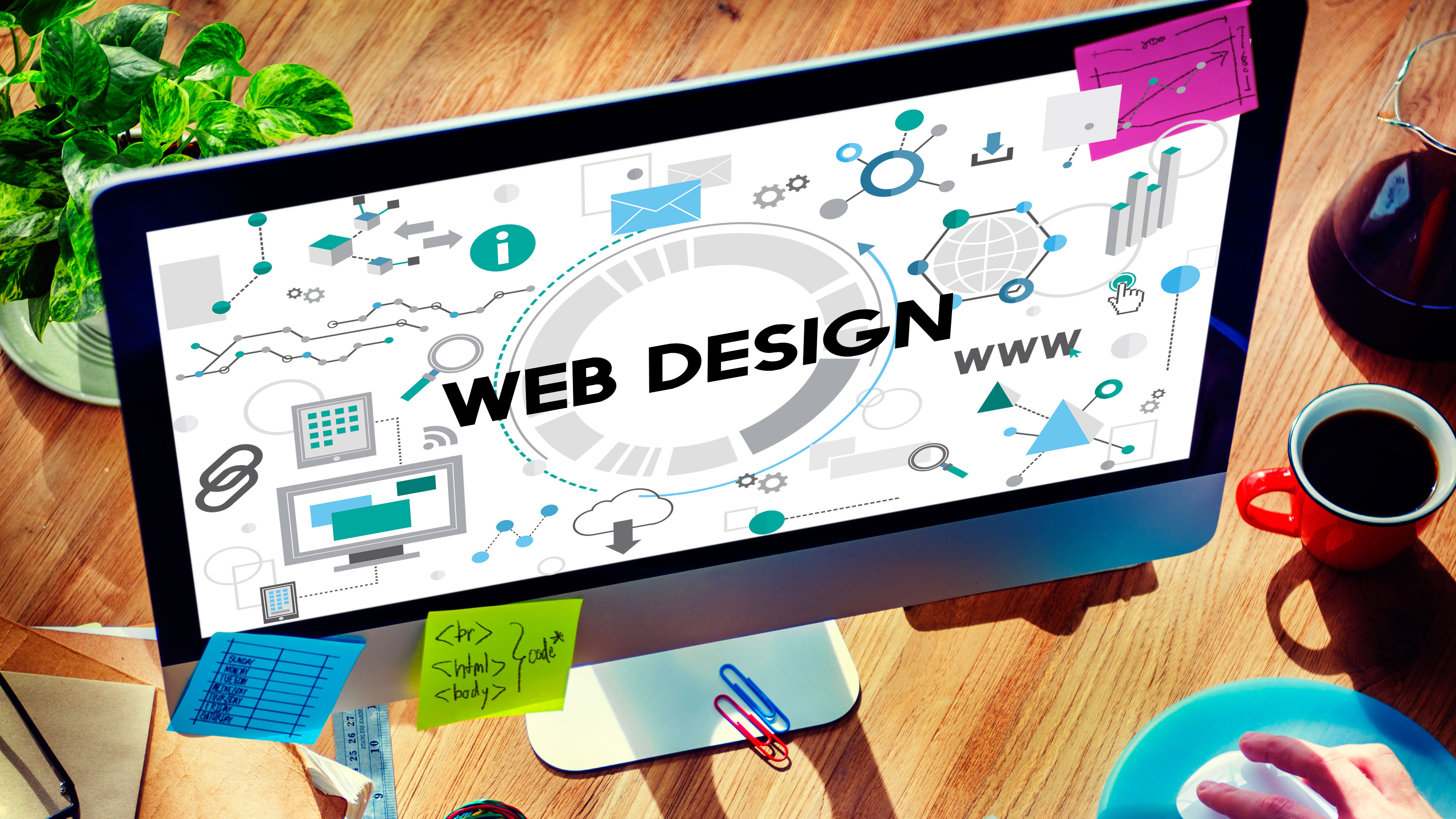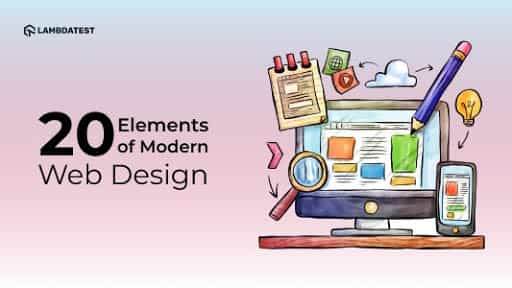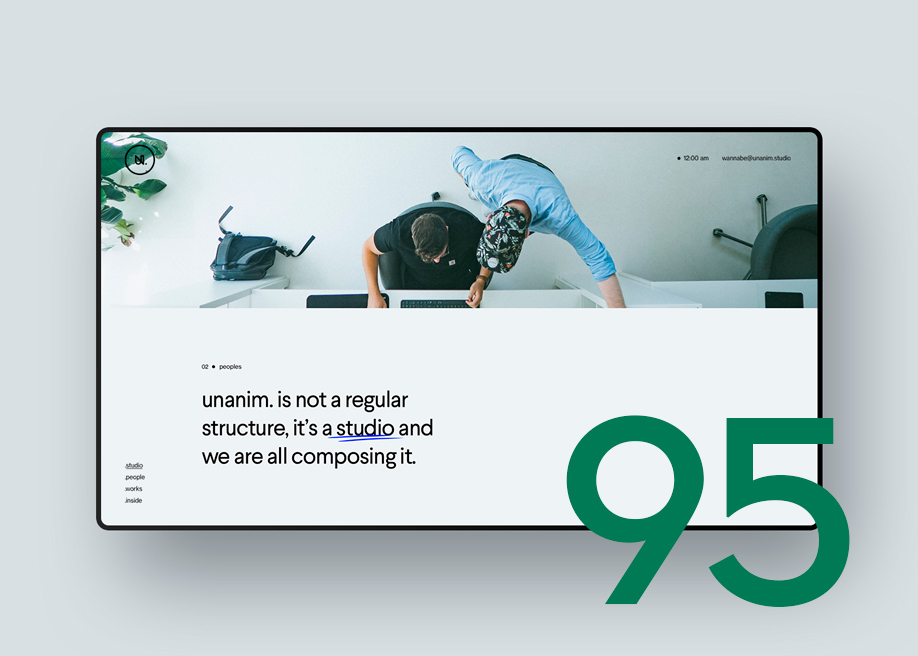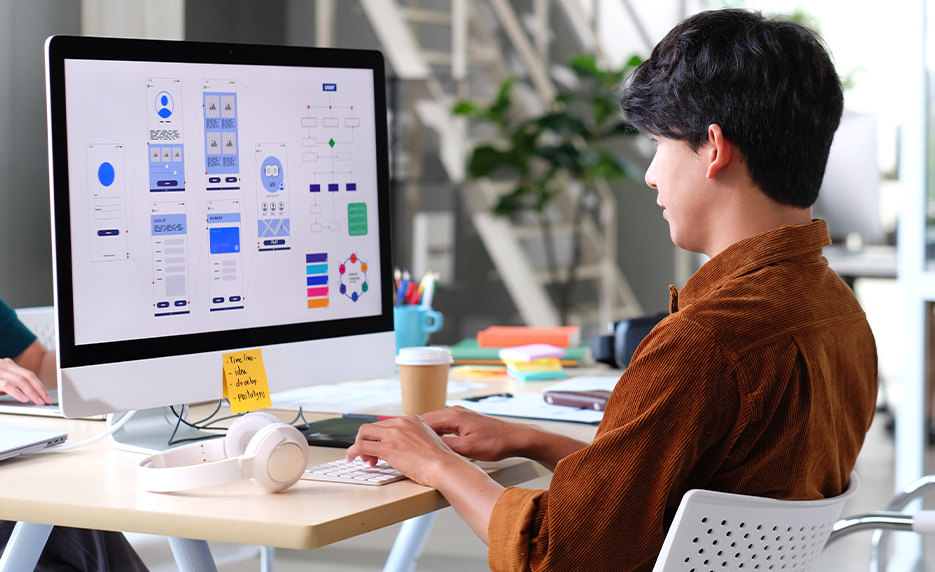All Categories
Featured
Table of Contents
- – Web Design Certificate - Web Development Certi...
- – 53 Web Design Tools To Help You Work Smarter ...
- – Top Web Design Companies - Find Web Designers...
- – What Does A Web Designer Do? - Careerexplorer...
- – Law Firm Website Design, Attorney Web Design,...
- – Chavez Web Design: Web Design San Diego - Bak...
- – Law Firm Website Design, Attorney Web Design...
- – Web Design Tools & Software - Webflow Tips a...
- – The Leader In Website Design – Squarespace T...
- – Google Web Designer - Home Tips and Tricks:
- – Web Design - Wikipedia Tips and Tricks:
Web Design Certificate - Web Development Certificate Program Tips and Tricks:
Quick summary Functionality and the energy, not the visual style, determine the success or failure of a site. Considering that the visitor of the page is the only person who clicks the mouse and for that reason decides whatever, user-centric design has actually established as a standard approach for successful and profit-oriented website design - web design frederick md.
and the energy, not the visual design, figure out the success or failure of a website. Since the visitor of the page is the only individual who clicks the mouse and for that reason chooses everything, user-centric style has ended up being a basic technique for successful and profit-oriented web style. If users can't utilize a feature, it may as well not exist.
g. where the search box must be placed) as it has currently been carried out in a number of articles; instead we concentrate on the techniques which, utilized correctly, can lead to more sophisticated design choices and streamline the procedure of perceiving provided information. Please observe that you may be interested in the usability-related posts we've released prior to: Concepts Of Great Website Design And Reliable Web Design Standards, In order to use the concepts correctly we initially require to comprehend how users engage with sites, how they believe and what are the fundamental patterns of users' habits.
53 Web Design Tools To Help You Work Smarter In 2022 Tips and Tricks:
Visitors glimpse at each brand-new page, scan some of the text, and click the first link that captures their interest or slightly looks like the thing they're trying to find. In fact, there are big parts of the page they don't even take a look at. The majority of users look for something interesting (or beneficial) and clickable; as quickly as some appealing candidates are discovered, users click.
If a page supplies users with top quality content, they want to jeopardize the material with ads and the design of the site. This is the reason that not-that-well-designed sites with premium material gain a lot of traffic over years. Material is more crucial than the design which supports it.

Users don't check out, they scan. Notice how "hot" locations abrupt in the middle of sentences. This is typical for the scanning procedure. Extremely simple concept: If a website isn't able to satisfy users' expectations, then designer failed to get his task done effectively and the company loses cash. The higher is the cognitive load and the less intuitive is the navigation, the more ready are users to leave the website and look for alternatives.
Top Web Design Companies - Find Web Designers Here Tips and Tricks:
Neither do they scan webpage in a direct fashion, going sequentially from one website section to another one. Rather users satisfice; they choose the very first affordable alternative. As quickly as they find a link that looks like it might result in the goal, there is an excellent possibility that it will be instantly clicked.
It doesn't matter to us if we comprehend how things work, as long as we can utilize them. If your audience is going to imitate you're creating billboard, then design terrific signboards." Users want to have the ability to control their browser and depend on the constant information presentation throughout the site.
If the navigation and site architecture aren't instinctive, the number of concern marks grows and makes it harder for users to understand how the system works and how to get from point A to point B. A clear structure, moderate visual clues and quickly identifiable links can assist users to find their path to their goal.
What Does A Web Designer Do? - Careerexplorer Tips and Tricks:

Given that users tend to check out sites according to the "F"-pattern, these 3 statements would be the first elements users will see on the page once it is loaded. The design itself is easy and instinctive, to understand what the page is about the user needs to browse for the answer.
Once you've accomplished this, you can interact why the system is beneficial and how users can benefit from it. Don't Waste Users' Persistence, In every task when you are going to provide your visitors some service or tool, attempt to keep your user requirements minimal.
Novice visitors are willing to, not filling long web forms for an account they might never ever use in the future. Let users explore the website and find your services without forcing them into sharing private data. It's not sensible to force users to go into an e-mail address to test the feature.
Law Firm Website Design, Attorney Web Design, Lawyer ... Tips and Tricks:
Stikkit is a perfect example for an user-friendly service which needs nearly absolutely nothing from the visitor which is unobtrusive and comforting. And that's what you desire your users to feel on your web website. Obviously, Mite needs more. The registration can be done in less than 30 seconds as the form has horizontal orientation, the user doesn't even require to scroll the page.
A user registration alone is sufficient of an obstacle to user navigation to cut down on incoming traffic. Manage To Focus Users' Attention, As sites offer both static and vibrant material, some elements of the user interface attract attention more than others do.
Focusing users' attention to specific locations of the website with a moderate use of visual aspects can assist your visitors to get from point A to point B without thinking about how it actually is expected to be done. The less question marks visitors have, the they have and the more trust they can establish towards the company the site represents.
Chavez Web Design: Web Design San Diego - Bakersfield ... Tips and Tricks:
Aim For Feature Exposure, Modern web styles are normally criticized due to their technique of assisting users with visually appealing 1-2-3-done-steps, big buttons with visual impacts and so on. From the design point of view these elements in fact aren't a bad thing.
The website has 9 primary navigation options which are visible at the first glance. The choice of colors might be too light. is a fundamental concept of effective user interface style. It doesn't really matter how this is attained. What matters is that the content is well-understood and visitors feel comfy with the method they connect with the system.
com gets directly to the point. No adorable words, no exaggerated statements. Rather a rate: just what visitors are looking for. An optimal option for efficient writing is touse short and concise expressions (come to the point as rapidly as possible), usage scannable design (categorize the material, utilize several heading levels, use visual elements and bulleted lists which break the flow of uniform text blocks), use plain and unbiased language (a promo doesn't need to sound like ad; give your users some affordable and unbiased reason that they ought to utilize your service or remain on your website)6.
Law Firm Website Design, Attorney Web Design, Lawyer ... Tips and Tricks:
Users are hardly ever on a site to enjoy the style; in addition, most of the times they are searching for the information despite the design - web design frederick md. Pursue simpleness rather of intricacy. From the visitors' point of view, the very best site style is a pure text, without any ads or further content obstructs matching exactly the question visitors utilized or the content they have actually been searching for.
Finch plainly provides the info about the website and provides visitors a choice of alternatives without overcrowding them with unneeded content. 7. Don't Be Scared Of The White Space, Really it's actually tough to overstate the importance of white space. Not only does it assist to for the visitors, however it makes it possible to view the info presented on the screen.
Complex structures are more difficult to read, scan, evaluate and deal with. If you have the option in between separating two style sections by a visible line or by some whitespace, it's normally better to utilize the whitespace option. (Simon's Law): the much better you manage to offer users with a sense of visual hierarchy, the simpler your content will be to view.
Web Design Tools & Software - Webflow Tips and Tricks:
The exact same conventions and guidelines should be applied to all elements.: do the most with the least amount of hints and visual aspects. Clarity: all elements should be developed so their significance is not unclear.
Conventions Are Our Buddies, Traditional design of site aspects does not result in a boring website. As they minimize the finding out curve, the requirement to figure out how things work. For instance, it would be a functionality headache if all websites had different visual discussion of RSS-feeds. That's not that different from our regular life where we tend to get utilized to basic concepts of how we organize information (folders) or do shopping (placement of products).
comprehend what they're anticipating from a site navigation, text structure, search positioning etc. A case in point from use sessions is to translate the page in Japanese (assuming your web users don't understand Japanese, e. g. with Babelfish) and provide your usability testers with a task to find something in the page of different language.
The Leader In Website Design – Squarespace Tips and Tricks:
Steve Krug recommends that it's better to, however take benefits of conventions when you don't. 10. Test Early, Test Typically, This so-called TETO-principle should be used to every website design job as functionality tests frequently supply into significant issues and concerns connected to a given layout. Test not too late, not too little and not for the wrong factors.
Some important indicate keep in mind: according to Steve Krug, and testing one user early in the job is better than testing 50 near the end. Accoring to Boehm's first law, mistakes are most frequent during requirements and style activities and are the more expensive the later they are gotten rid of.
That means that you develop something, test it, repair it and then evaluate it once again. There might be problems which have not been discovered throughout the very first round as users were almost blocked by other issues.
Google Web Designer - Home Tips and Tricks:

This holds for designers. After you've dealt with a website for few weeks, you can't observe it from a fresh viewpoint anymore. You know how it is developed and therefore you know precisely how it works you have the wisdom independent testers and visitors of your site wouldn't have.
It can be linked to other areas such as graphic design, user experience, and multimedia arts, however is more appropriately seen from a technological standpoint. It has become a big part of people's daily lives. It is difficult to envision the Internet without animated graphics, different designs of typography, background, videos and music.

Throughout 1991 to 1993 the World Wide Web was born. Text-only pages might be seen using a simple line-mode internet browser. There had actually been no integrated method to graphic design aspects such as images or sounds.
Web Design - Wikipedia Tips and Tricks:
The W3C was developed in October 1994 to "lead the Internet to its full potential by establishing typical procedures that promote its advancement and guarantee its interoperability." This dissuaded any one business from monopolizing a propriety internet browser and shows language, which might have changed the result of the Internet as a whole.
As this has actually occurred the innovation of the web has actually likewise moved on. There have actually likewise been significant modifications in the way people use and access the web, and this has actually altered how websites are developed.
Learn more about Lovell Media Group LLC or TrainACETable of Contents
- – Web Design Certificate - Web Development Certi...
- – 53 Web Design Tools To Help You Work Smarter ...
- – Top Web Design Companies - Find Web Designers...
- – What Does A Web Designer Do? - Careerexplorer...
- – Law Firm Website Design, Attorney Web Design,...
- – Chavez Web Design: Web Design San Diego - Bak...
- – Law Firm Website Design, Attorney Web Design...
- – Web Design Tools & Software - Webflow Tips a...
- – The Leader In Website Design – Squarespace T...
- – Google Web Designer - Home Tips and Tricks:
- – Web Design - Wikipedia Tips and Tricks:
Latest Posts
Awwwards - Website Awards - Best Web Design Trends Tips and Tricks:
Web Design Vs. Web Development - Upwork Tips and Tricks:
Learning Web Design: A Beginner's Guide To Html, Css ... Tips and Tricks:
More
Latest Posts
Awwwards - Website Awards - Best Web Design Trends Tips and Tricks:
Web Design Vs. Web Development - Upwork Tips and Tricks:
Learning Web Design: A Beginner's Guide To Html, Css ... Tips and Tricks: